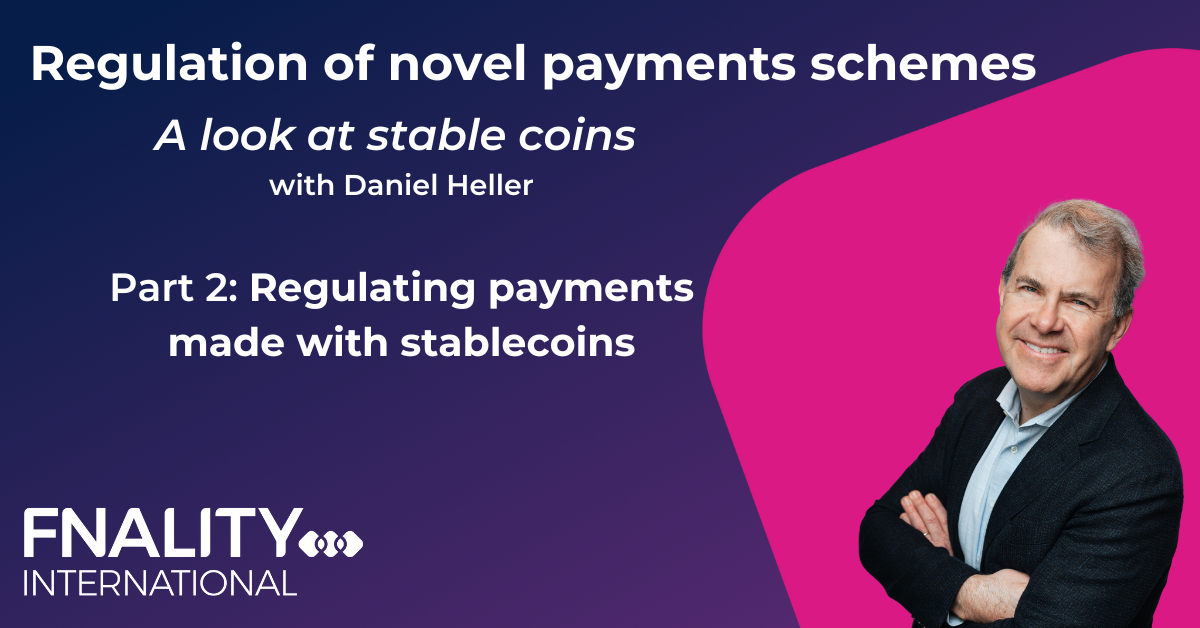 Since the first discussions over a global stablecoin started in 2019, international standard-setting bodies have been developing and refining recommendations for the regulation, supervision and oversight of global stablecoin arrangements (FSB 2020 and FSB 2022). In the first blog of this series, we looked at the issuance and redemption of stablecoins, but now we want to focus on the risks and benefits from the opportunity to make payments with stablecoins, and how this should be regulated.
Since the first discussions over a global stablecoin started in 2019, international standard-setting bodies have been developing and refining recommendations for the regulation, supervision and oversight of global stablecoin arrangements (FSB 2020 and FSB 2022). In the first blog of this series, we looked at the issuance and redemption of stablecoins, but now we want to focus on the risks and benefits from the opportunity to make payments with stablecoins, and how this should be regulated.
Arguably one of the most important (and beneficial) functions of stablecoins is that they can be used to make payments and settle a wide range of financial obligations.1 In this context, it should be noted that the operator of this payment system may not be identical to the issuer of the stablecoin. If this is the case, different legal entities will have to be subject to consistent regulation.
It has long been recognized that payment systems are not only important from an efficiency point of view, but also from a financial stability (systemic risk) point of view. For instance, operational problems of one participant in a payment system can lead to the late submission of its payment orders. This can then spill over to another participant in the same payment systems, resulting in widespread settlement delays. Thus, it is important for any payment system to be based on solid rules and crisis-resistant procedures in order to guarantee fast and safe settlement. The first set of international standards for systemically important payment systems was issued more than 20 years ago (CPMI 2001). Just recently, global standard-setting bodies have just issued a guidance report on how the 2012 CPMI-IOSCO Principles of Financial Market Infrastructures (PFMI) should be applied to the payments function of systemically important stablecoin arrangements (CPMI-IOSCO 2022).
For any payment arrangement, the quality of the settlement asset is of utmost importance, i.e. the asset which is transferred to settle financial obligations.2 The quality of a stablecoin as a settlement asset is directly linked to the way issuance and redemption are governed (read more in our blog here).While central bank money has the best properties as a settlement asset, other types of high-quality assets may also be used as long as they carry minimal credit and liquidity risk.
As CPMI-IOSCO (2022) clarifies, there are limits to how much decentralization can be tolerated in stablecoin arrangements. For instance, it is essential that the stablecoin arrangement’s “ownership structure and operation allow for clear and direct lines of responsibility and accountability”. Also, the finality of payments needs to be clearly defined (i.e. deterministic rather than probabilistic) implying that probabilistic finality does not meet the standard.3
While stablecoin payments may open up a whole new realm of digital payments for retail (and possibly wholesale) transactions, the regulatory requirements imposed on the operator of the payment function of the stablecoin arrangement must not be underestimated. Stablecoin payments that are based, for instance, on decentralized governance and probabilistic finality will find it very challenging to comply with the regulatory standards.
Coming up in Part 3 of this series:
Stablecoins are usually listed on (crypto) exchanges and trading venues, which challenges does this raise for regulators?
Find out more in our next blog post on: Trading of Stablecoins and Token Wrapping publishing on Tuesday 22nd.
If you’ve missed Part 1 of this series, you can find it here.


